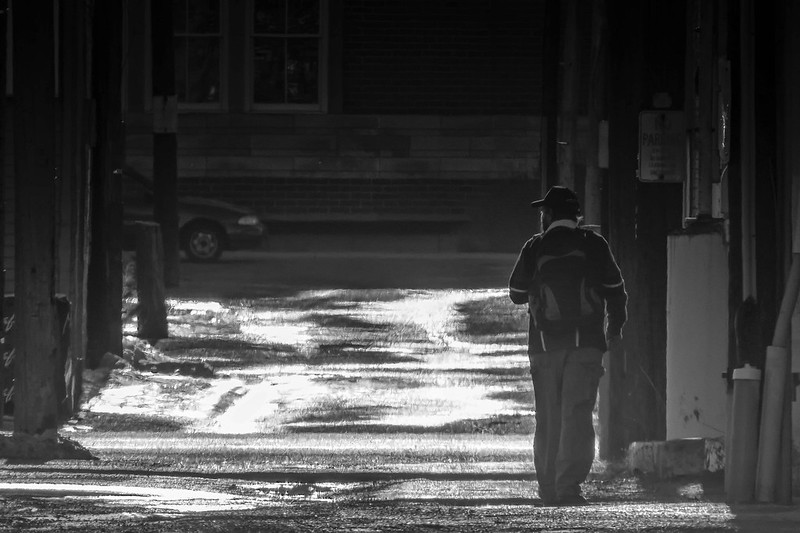This week our top three cases cover: DNA & Continuity, Eye-witness identification, Circumstantial Evidence, the effect of Crown specifying a mode of committing an offence, and impaired care and control.
R. v. Wuschenny (ONSC)
[Nov 14/18] DNA & Continuity, Eye-witness Photographic Identification, and Circumstantial Evidence – 2018 ONSC 6765 [Pomerance J.]
AUTHOR’S NOTE: In remarkably well-written judgement, Justice Pomerance outlines the proper processes in eye-witness photo lineups and the key questions of DNA evidence continuity in a cold case. Ultimately, the court concludes that one piece of unreliable evidence cannot corroborate another piece of unreliable evidence. In a circumstantial case, the Crown still has to meet a threshold of proof before the Defence is called upon to argue any reasonable alternative inferences.
Pertinent Facts
“ST was sexually assaulted by an intruder who broke into her home in September 1990. He forced her to perform fellatio and then insisted that she swallow the ejaculate. The perpetrator wore a pillow case over his face for most of the ordeal, though the victim says that she had one opportunity to see his face.” (Para 1)
“The accused was a suspect back in the 1990s, but was not charged. The case was re-opened in 2015, and exhibits were submitted for further testing. The accused’s DNA profile was detected in semen found on a T-shirt believed to have been worn by the victim during the incident. The accused was charged in 2016…” (Para 3)
“The Crown argues that the semen on the T-shirt is powerful evidence of guilt, particularly when combined with the identification of the accused by the victim in a photographic lineup. The defence argues that the Crown has failed to link the T-shirt to the crimes and that the photo lineup was fatally flawed.” (Para 5)
Continuity of the DNA Evidence
“There was only one perpetrator. But there are four semen donors: three on the bedsheet and one on the T-shirt. Which of those donors committed the crimes before the court?” (Para 49)
“[The Complainant] testified that she spit out some of the semen in order to generate evidence. Ultimately, she acknowledged that, while she spit some semen out, she could not say whether it landed on the T-shirt or the bed.” (Para 51)
“One can add to the mix the uncertainties surrounding the T-shirt. We know that, in 2015, the T-shirt was found in a box of exhibits said to be linked to this case. We know that the T-shirt contains a sample of the accused’s semen. Beyond that, we know very little. The link between the T-shirt and the crimes is rooted in assumptions rather than evidence.” (Para 53)
“No officer who investigated in the 1990s can attest to seeing or seizing a T-shirt. No other steps have been taken to link the T-shirt to the crime. The victim could not recall what she was wearing the night of the attack. She testified that she often slept in a T-shirt and pants or shorts.” (Para 54-55)
“The accused has not offered a viable explanation for how his semen ended up on the T-shirt. However, to require such an explanation from the accused would, in this case, be to reverse the onus of proof.” (Para 57)
“Crown has failed to link the T-shirt to the crime. If the T-shirt is not linked to the crime, the DNA on the T-shirt cannot tell us who committed the crime. To ask the defence to explain the presence of the semen in these circumstances is to reverse the onus of proof: see R. v. Nayyar, 2017 BCCA 297, at paras. 19-22. It is to leap over a critical issue that must first be proved by the Crown. The evidence does not permit me to find, as a fact, that the T-shirt was ever worn by ST, let alone that it was worn by her at the time of the offence.”(Para 59)
Photographic Identification
“We have learned a lot about identification procedures since 1990. It is now beyond controversy that defective procedures can lead to misidentification. This is a function of the frailties of eyewitness identification, and the psychological effects of different presentation methods. The protocols of today are designed to minimize the risk of error. Photographs are to be presented sequentially, to avoid relative judgments. The witness is to be told that the perpetrator’s photo may not be in the lineup. The lineup should be administered by an officer not involved in the investigation. These protocols were not in place in the 1990s and were not followed in this case.” (Para 63)
“Of greatest concern is the fact that the accused’s photograph is different from the others in the array. In a proper array, the suspect’s photo does not stand out as being different from the others. This is a matter of common sense. If the photograph of the suspect is distinctive in some obvious way, it may be selected for that reason.” (Para 64)
“Here, the accused’s photograph leaps off the page, as if it is highlighted. It draws the eye. It has a different coloured background. It presents the accused from a different perspective. He is looking toward the camera while the others are looking to the side. His face is much larger than those depicted in the other photographs. While the other photos are clearly post arrest “mugshots” to use the vernacular, the accused’s photograph looks like it was taken in a different context. It has an almost glamorous appearance, as if a portrait or a photograph taken for a high school yearbook.” (Para 65)
“Identification evidence has a binary quality. It is either correct or it is not correct. Either the right person is identified, or the wrong person is identified. If the wrong person is identified, the identification cannot be just a little bit incorrect. It cannot be moderately incorrect. It must, by necessity, be one hundred percent incorrect. If there is a meaningful risk of false identification, the evidence should be surgically excised from the factual matrix. Unreliable evidence does not advance the search for truth. Unreliable evidence leads to unreliable verdicts.” (Para 70)
Circumstantial Evidence
“As noted in Hart, unreliable evidence has been identified as a contributing cause of wrongful convictions. Such evidence may take the form of a sincere but mistaken eyewitness; invalid science offered by a seemingly impressive expert; evidence offered by jailhouse informants and accomplices; and confessions elicited through dubious police methods. Sometimes, the surface appeal of the evidence will conceal its shortcomings. An expert’s credentials may distract from defective methodology. A confession, however obtained, may generate the myth that a person would never admit to a crime they didn’t commit. An identification from a sincere but mistaken witness, may be stated with an inflated level of confidence. Forensic DNA evidence, peppered with numbers in the trillions and quadrillions, may artificially increase the value of a piece of circumstantial evidence.” (Para 74)
“Rejection of unreliable evidence is one way that courts can protect the integrity of the process and guard against miscarriages of justice.” (Para 75)
“The difficulty with this rhetorical question is that both items of evidence are lacking in reliability. The photographic lineup is fatally flawed. The DNA results, while scientifically valid, are not reliably linked to the offences in this case. Both items of evidence point in the same direction, but there is reason to believe that it may be the wrong direction.” (Para 76)
“Logically, one piece of unreliable evidence cannot lend cogency to another piece of unreliable evidence. To hold otherwise would be to allow the most dangerous form of bootstrapping. Where evidence is of some probative value, it can combine with other evidence of probative value and cumulatively amount to proof. When the evidence has been determined to be unreliable (as is the photo lineup) or irrelevant (as is the accused’s semen on a T-shirt not shown to be connected to the crime), there is no utility in combining it. If evidence is unreliable or irrelevant it is of no probative value. Zero plus zero equals zero. In the worst case scenario, the equation might yield something other than zero. It might prompt an erroneous conviction.” (Para 77)
“There is a reasonable likelihood of misidentification, given the defects in the photographic line-up and the mysteries surrounding the T-shirt. One can only get to an inference of guilt by “filling in the blanks” or “jumping to conclusions”, both impermissible steps in the deliberation process: see R. v. Villaroman, 2016 SCC 3, [2016] 1 S.C.R. 1000, at para. 30.” (Para 79)
“I expect that this decision will be a disappointment to ST. I have no doubt that the crimes occurred as she described them. The offences violated her bodily integrity, as well as the sanctity and security of her home. I expect that she might have been hoping for some degree of closure. I cannot provide that to her in the form of a finding of guilt. What I can do, and indeed, must do, is ensure that the tragedy of the crime is not compounded by the further tragedy of an unsafe conviction.” (Para 80)
Accused acquitted on all counts
R. v. Robinson (ONCA)
[Sept 11/18] Effect of Crown Specifying a Mode of Committing an Offence – 2018 ONCA 741 [P. Lauwers J.A., G. Pardu J.A., David M. Paciocco J.A.]
AUTHOR’S NOTE: Many offences, such as robbery have different Criminal Code sections that apply to different methods of committing them. Where the Crown specifies a particular mode in the Information/Indictment, they are stuck with it. The trial judge cannot convict of another mode even where, as here, the evidence from the testimony of the accused establishes that different mode. The ONCA also discusses their power to amend a count on appeal and outlines that prejudice to the appellant/accused is a factor that prevented them from exercising that ability here.
Pertinent Facts
“Ishmael Robinson was convicted of a number of offences arising out of an altercation that occurred after Mr.Robinson purported to sell cocaine powder to an associate, Leonard Ford, who owed him money. The trial judge accepted most of Mr. Robinson’s testimony but found Mr. Robinson’s own account supported his convictions of robbery, breach of recognizance, breach of probation in failing to keep the peace, and possession of the proceeds of crime.” (Para 1)
“The robbery conviction occurred despite the trial judge’s conclusion that the Crown had failed to prove the specific allegation it had made that, when he stole the money, Mr. Robinson was armed with a firearm, thereby committing robbery contrary to Criminal Code, R.S.C. 1985, c. C-46, s. 343(d). Since Mr. Robinson admitted violence and theft in his testimony, the trial judge convicted him of “the lesser, included offence” of robbery contrary to s. 343(b).” (Para 2)
Different Modes of Committing an Offence
“We would, however, give effect to Mr. Robinson’s other ground of conviction appeal. The Crown was correct to concede the error; one mode of robbery cannot be an included offence in a charge specifying another mode of robbery because s. 343 creates only one offence of robbery, with different ways of committing it. While the Crown need not allege a specific mode of robbery in the charge, where it does so, as here, the Crown must prove the mode of robbery it alleges: R. v. Johnson (1977), 35 C.C.C. (2d) 439 (B.C. C.A.), at pp. 460-61; R. v. Manley, 2011 ONCA 128, 269 C.C.C. (3d)40 (Ont. C.A.).” (Para 12)
Appellate Court Power to Amend Counts
“We agree that the power to amend a count in an information or indictment on appeal provided by s. 683(1)(g) is broad: R. v. Irwin (1998), 38 O.R. (3d) 689 (Ont. C.A.), at pp. 693-94; R. v. Bidawi, 2018 ONCA 698 (Ont. C.A.), at para.33. An appellate court has the discretion to amend the indictment or information to conform to the evidence at trial, including by substituting a different charge, unless it is of the opinion that the accused has been misled or prejudiced: R.v. Irwin, at p. 700; and see R. v. M.N., 2017 ONCA 434, 37 C.R. (7th) 418 (Ont. C.A.).” (Para 14)
“This is not, however, an appropriate case for such an amendment because the Crown has not satisfied us that amending the alleged mode of robbery would not prejudice Mr. Robinson. Charged with robbery by stealing while armed with a firearm, he chose to testify and deny possession of a firearm. His evidence included admissions to using violence and taking the money held by Mr. Ford. In effect, by testifying in response to one charge, Mr. Robinson effectively admitted to the uncharged offence the Crown now wishes to hold him responsible for. In our view, in the circumstances of this case, to change the charge after he made the tactical decision to testify in response to the charge laid would be unfair.” (Para 15)
“We would, however, pursuant to Criminal Code, s. 686(3), substitute a verdict of guilty of the offence of theft under $5,000 contrary to Criminal Code, s. 334(b). This offence is included in the allegation made against Mr. Robinson in the robbery count that he “did steal” from Mr. Ford, since Criminal Code, s. 2 defines steal as meaning “to commit theft”: R. v. Fergusson (1961), [1962] S.C.R. 229 (S.C.C.), at p. 233.” (Para 18)
R. v. Goncalves (ONCJ)
[Aug 22/18] Impaired/Over 80 Care and Control – Lack of Intention to Drive – 2018 ONCJ 571 [Richard Blouin J.]
- AUTHOR’S NOTE: Impaired/Over 80 Care and Control charges can result in a conviction where the vehicle is on, the driver occupies the driver’s seat. Here, those factors were further advanced by the seat belt being engaged. However the accused’s evidence was believed due to a number of factors including: the parking brake being engaged and the accused’s utterances at the roadside that he was not going to drive.
Pertinent Facts
“On Sunday, March 5, 2017, around 2:45 a.m. plainclothes police were responding to a radio call involving “unknown trouble”. When they arrived nearby on Donlands Avenue, they found the defendant in the driver’s seat, slumped over the steering wheel with the engine engaged and his seatbelt on. He appeared to be sleeping. They requested uniformed officers to attend. The vehicle was in park in a proper parking spot. Officers knocked on the window and received no response. When awakened, the defendant admitted drinking. Mr. Goncalves was arrested for impaired care or control, and asked to exit the vehicle. He was very unsteady on his feet and almost fell over. At the police station he provided two breath samples, 142 and 135 milligrams of alcohol in 100 millilitres of blood respectively. Mr. Goncalves was the charged with Over 80 Care or Control. The breath sample evidence was introduced by way of certificate.” (Para 3)
“Constable Worts agreed that the defendant told him upon investigation, while still in the car, that he was not planning on driving. The officer asked him why he had the seatbelt on.” (Para 4)
“Mr. Goncalves testified that he returned home from dinner at his daughter’s around 9 p.m. After half-an-hour, he decided to go to McDonald’s to distract himself (he was alone since his wife was overseas attending to her mother’s death). Instead he decided to go to Wally’s Bar at Donlands and O’Connor. He had three glasses of wine between 11p.m. and 1:45 a.m. even though he planned only to have one. Because he drank more than intended, he decided to walk home (about one-half-hour away). He walked 500 metres to Cosburn Avenue before suffering an asthma attack. Even though he had his medication with him, he decided to return to his car to warm up and feel better.” (Para 5)
“When he got back to his car he put the emergency brake on. He felt he was probably in his car for 45 minutes before the police arrived to find him asleep at the wheel with his seatbelt on and the engine running. He admitted he was in no condition to drive, so his plan was to walk back home when he felt better (or take a taxi if one could be found – he didn’t have a cell phone). Oddly, he engaged his seatbelt.” (Para 6)
Care and Control
“Justice Fish [in R. c. Boudreault, [2012] 3 S.C.R. 157 (S.C.C.)] sets out the law regarding care or control of a motor vehicle:
41 A realistic risk that the vehicle will be set in motion obviously constitutes a realistic risk of danger. Accordingly, an intention to set the vehicle in motion suffices in itself to create the risk of danger contemplated by the offence of care or control. On the other hand, an accused who satisfies the court that he or she had no intention to set the vehicle in motion will not necessarily escape conviction: An inebriated individual who is found is found behind the wheel and has a present ability to set the vehicle in motion – without intending at that moment to do so – may nevertheless present a realistic risk of danger.
42 In the absence of contemporaneous intention to drive, a realistic risk of danger may arise in at least three ways.First, an inebriated person who initially does not intend to drive may later, while still impaired, change his or her mind and proceed to do so; second, an inebriated person behind the wheel may unintentionally set the vehicle in motion; and third, through negligence, bad judgment or otherwise, a stationary or inoperable vehicle may endanger persons or property.” (Para 9)
“As a result, I accept his evidence that he did not intend to drive when he was asleep at the wheel. If he intended to, he could have driven away when he first entered the vehicle, and he did not. Accordingly, he has rebutted the presumption ins. 258(1)(a). I should mention his response to police at the scene that he did not intend to drive was not the predominant factor in my conclusion. I believe him without that. But, that comment, in my view at the very least, rebuts recent fabrication. By recent, I mean at a time after the arrest when one has an opportunity to concoct a story.” (Para 11)
“I also conclude the vehicle could not be put in motion accidentally. The car was in park, in a proper parking spot with the emergency brake on. To engage the transmission, one would need to put a foot on the brake. I am of the view that this vehicle could not be set in motion accidentally. Its location, properly parked, posed no risk.” (Para 12)
Accused acquitted.






